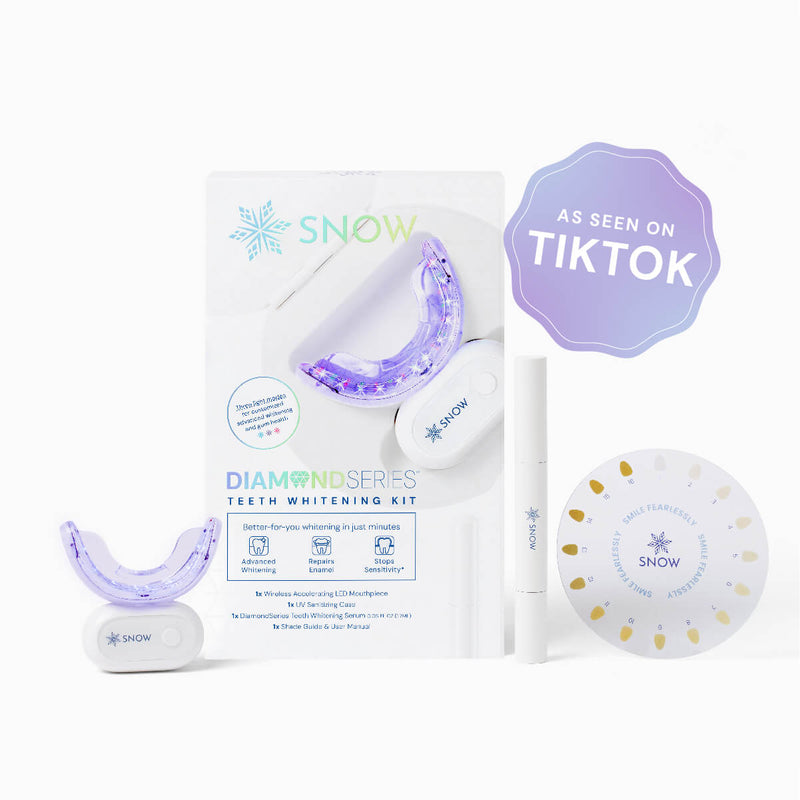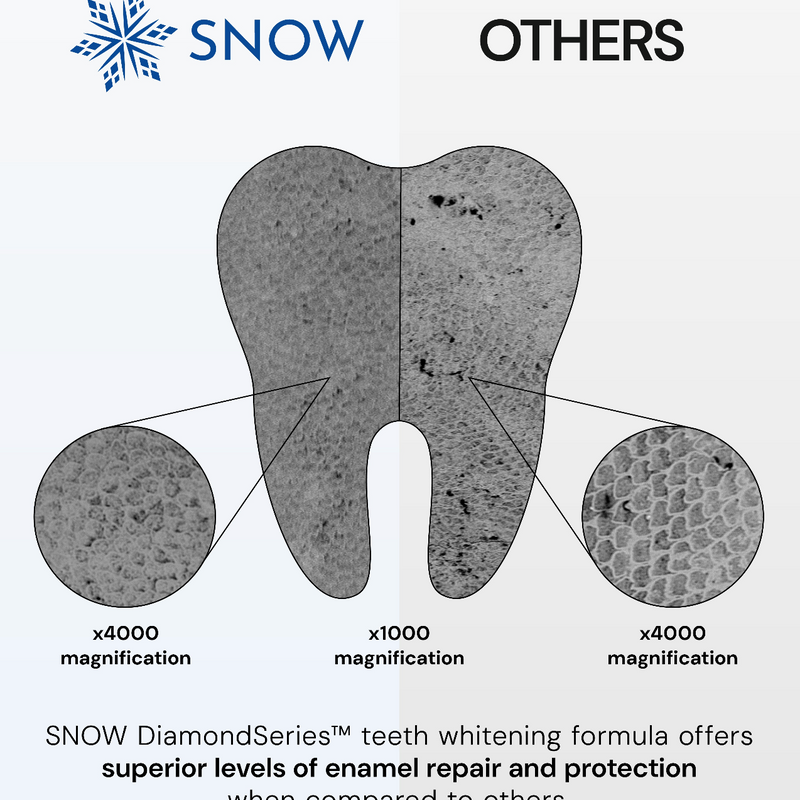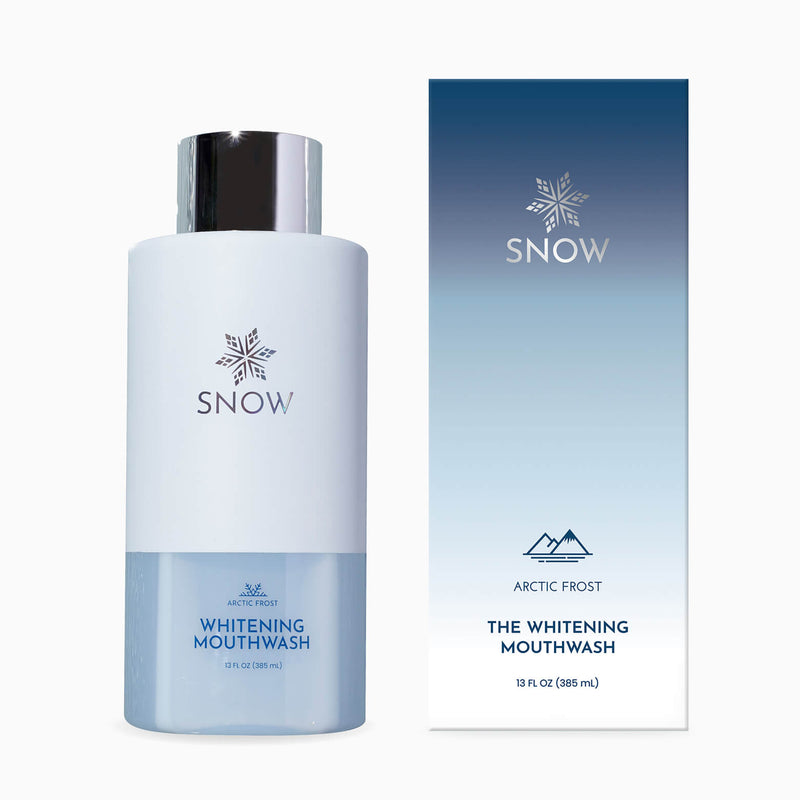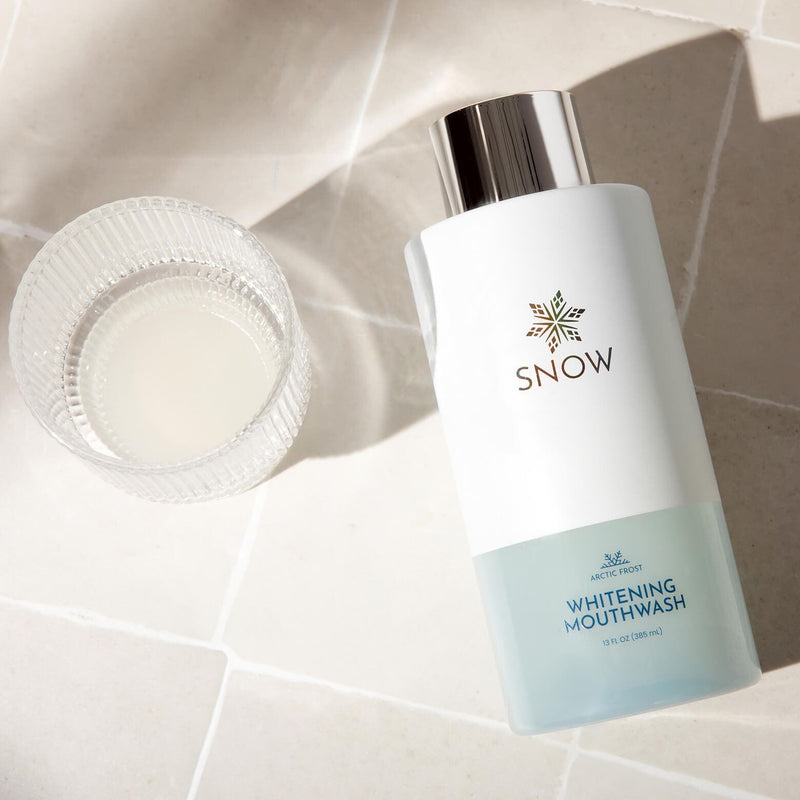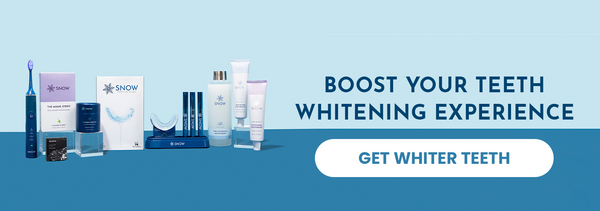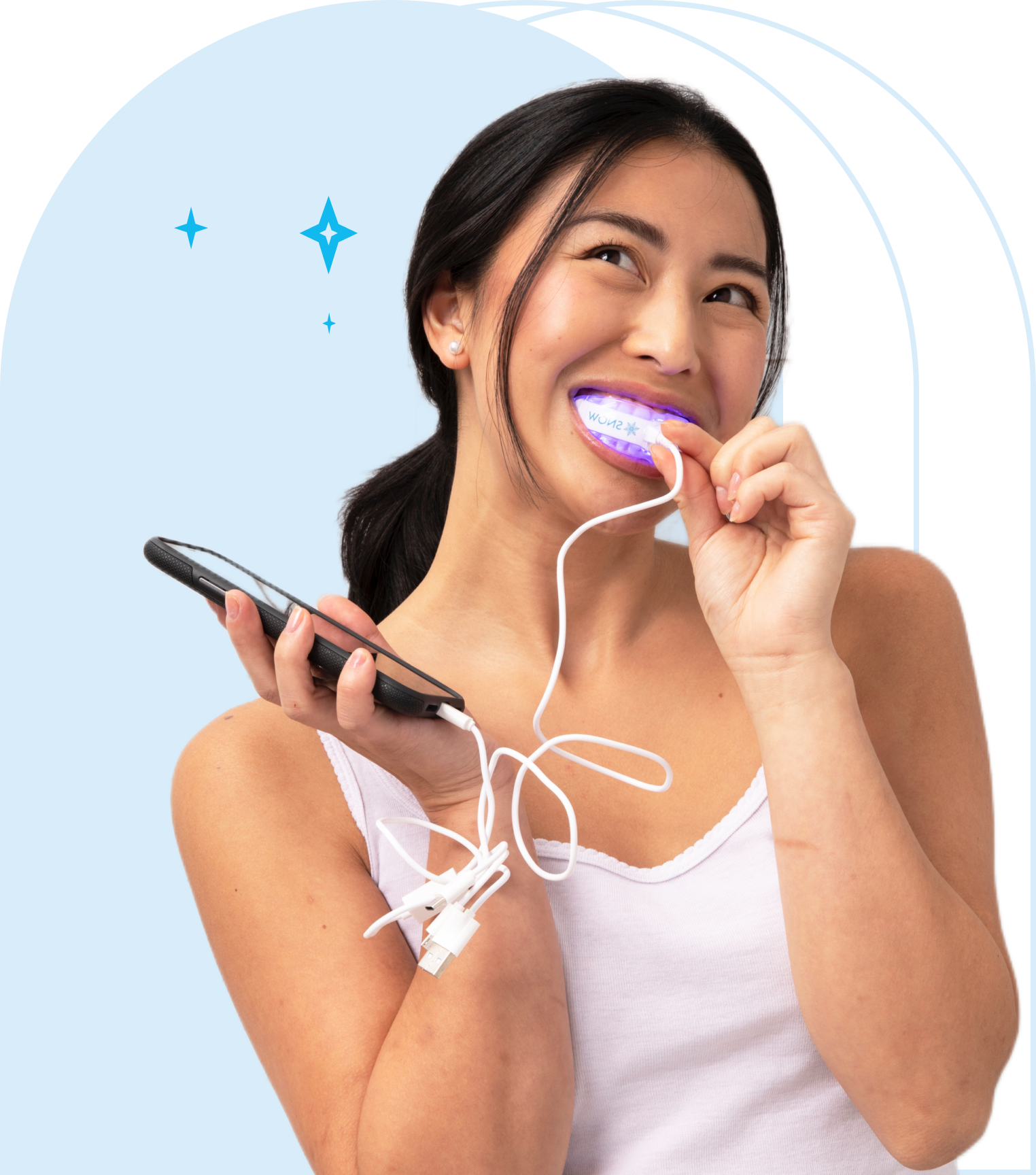A healthy, beautiful, bright white smile is a valuable thing. It can instill a sense of self-confidence, endear you to others, and inspire you to smile more, which is scientifically proven to make you happier.
But not everyone is blessed with an incandescent smile, and for some, even a great oral hygiene routine isn’t enough to give them the bright white teeth they want. Fortunately, there is a solution to this problem: teeth whitening.
Teeth whitening can help tackle staining and tooth discoloration in order to give you the smile you’ve always wanted. However, it’s not necessarily going to be cheap, and since it’s strictly a cosmetic procedure, it’s not likely to be covered by dental insurance.
If you’re looking to brighten your smile at a price you can afford, then there are a few things you’ll want to know.
That’s why we’ve created this comprehensive guide to all of the different teeth whitening treatments available. It describes the reasons for staining and discoloration, the various types of teeth whitening treatments, how much they cost, and more.
WHAT IS TEETH WHITENING?
Teeth whitening is a simple procedure designed to rid your teeth of surface stains and improve the appearance of tooth discoloration. It’s done with the help of whitening agents such as hydrogen peroxide and is available in the form of both over-the-counter products and in-office professional whitening procedures.
WHAT CAUSES TOOTH DISCOLORATION AND STAINING?
If you’re wondering where you went wrong in your endeavors to maintain a bright white smile, try not to be so hard on yourself: discoloration is not unusual, and sometimes it’s even unavoidable. Below are some of the most likely causes of this common problem.
CERTAIN KINDS OF FOOD AND DRINK
Anything you eat or drink that has strong pigmentation can wind up staining your teeth. This includes some well-known culprits, such as coffee, tea, and wine, as well as some less commonly known ones, such as dark-colored berries, tomato sauce, cola, curry, and soy sauce.
You don’t need to avoid these things altogether, but you should limit them if you’re looking to protect the pristine appearance of your tooth enamel.
POOR ORAL HYGIENE
Many of the things that can cause staining and discoloration can be combatted by a great oral hygiene routine. Brush twice a day, floss once a day, and see your dentist for a routine exam and cleaning every six months, and you’re much more likely to keep your teeth from losing their luster.
TOBACCO USE
Tobacco is notorious for its ability to stain teeth, and it’s not just limited to cigarettes. Any type of tobacco that you put in your mouth is liable to cause a yellowing of your teeth due to the nicotine it contains.
There are certainly other reasons why you should try to avoid tobacco use, but it’s a particularly good idea if you’re looking to keep your teeth nice and white.
THE AGING PROCESS
Many of the items on this list can be avoided, but unfortunately, getting older is not one of them. Aging is a prime culprit for tooth discoloration. The older you get, the thinner the white enamel on your teeth tends to become, and the more the yellow-colored dentin below it begins to show.
CERTAIN MEDICATIONS
There are a few different medications that can result in a darkening of your teeth. These include high blood pressure meds, antihistamines, antipsychotics, chemotherapy drugs, and more. Unfortunately, teeth whitening products won’t be able to help you with this sort of discoloration as long you continue to take the medication.
DENTAL TRAUMA
An injury to your mouth can result in something akin to bruising of the teeth. Your injured teeth will become a darker color that unfortunately can’t be treated with any cosmetic whitening kits. In this instance, other kinds of dental treatments may be the only solution.
DO WHITENING PROCEDURES WORK ON ALL TEETH?
While both over-the-counter products and professional whitening services can be highly effective in their efforts to whiten teeth in many situations, there are certain kinds of surface stains and tooth discoloration that they won’t be able to help.
You’ll likely need to seek other dental treatments if:
- You have stained porcelain veneers, crowns, or fillings
- Your teeth are discolored from certain medications
- You’ve sustained a dental injury that caused discoloration
- Your surface stains are a brown or gray color
- You suffer from sensitive teeth
Fortunately, there are other ways to achieve a bright white smile even if your particular circumstances don’t allow for cosmetic whitening. Speak with your dentist today to learn more.
THE DIFFERENT TYPES OF TEETH WHITENING TREATMENTS
If you’re ready for that glowing white smile you’ve always wanted, then you’ve got a few different options to choose from.
Each one has its own set of pros and cons, but ultimately there’s little reason to believe that you won’t be able to improve the appearance of your teeth by at least a few shades regardless of which one you pick.
To help you decide which option is best for you, we’ve listed them all below.
WHITENING TOOTHPASTE
This is probably the simplest option, and it’s one you can start taking advantage of today. While one of the primary objectives of all toothpastes is to whiten teeth, some are formulated to tackle stubborn stains with greater efficacy than others.
Look for any whitening toothpaste that’s been ADA approved to remove stains and you should be set. Just keep in mind that these products are for tackling stains and stains alone.
OVER-THE-COUNTER PRODUCTS
Not too far from the whitening toothpaste section, you should be able to spot some over-the-counter teeth whitening products that can do a far better job at tackling stubborn stains and taking care of certain types of discoloration.
These come in the form of trays that you fill with a teeth whitening gel and then fit onto your teeth.
On top of whitening trays, there are also whitening strips that can help you achieve a brighter smile. Strips work very similarly to whitening trays: you apply them to your teeth and allow them to sit for a prescribed amount of time so the whitening solution in them can get to work.
PROFESSIONAL WHITENING TREATMENT
You can opt for an in-office whitening procedure, which will require you to schedule an appointment at a dental office. Luckily, the procedure is quick, easy, and painless.
Your dentist will more or less just apply a whitening gel to your teeth that’s highly capable of tackling stubborn stains and tooth discoloration and then use UV light to help it set. There are also laser whitening procedures that are highly effective.
A big benefit of having professional teeth whitening by a cosmetic dentist is the aforementioned efficacy. In-office whitening can whiten teeth better than most other whitening procedures.
However, it’s also a lot less convenient than at-home whitening, and it costs significantly more, which is actually the crux of this entire guide. So if you’re looking for a cost-effective teeth bleaching solution, this one is not the answer.
AT-HOME WHITENING FROM THE DENTIST
You can also receive custom trays from your dentist that work in the same way the over-the-counter at-home whitening products do. You simply use your custom trays with a bleaching gel over a prescribed period of time, resulting in a brighter smile than ever before.
THE POTENTIAL SIDE EFFECTS OF TEETH WHITENING
While teeth bleaching is by and large totally safe and doesn’t come with any serious health risks, there are certain potential side effects that you should be aware of.
If you use teeth whitening products too often, you can potentially cause damage to your tooth enamel or even your gums. This side effect is easily avoidable, however, provided you follow the directions and don’t overdo it in your teeth whitening efforts.
Should you feel as though you have overused your whitening products, speak with your dentist.
Another potential side effect is tooth sensitivity. The hydrogen peroxide used to whiten teeth can penetrate into the area of the teeth where your nerve endings are located, resulting in irritation that can cause some discomfort.
This is almost always temporary, though, so if you’re experiencing tooth sensitivity, simply hold off on further whitening treatment until it has subsided.
HOW MUCH DOES TEETH WHITENING COST?
Finally, we’ve arrived at the most important part of this guide. None of the above information is of any use to you if teeth whitening treatment is beyond your budget, right?
Well, you’ll be happy to know that it doesn’t have to cost all that much to whiten your teeth, and even if your budget is particularly tight, there are still some potential options for you.
IN-OFFICE WHITENING
We mentioned earlier that professional teeth whitening costs significantly more than over-the-counter options, but we didn’t tell you exactly how much more.
The difference is considerable, with your average professional teeth whitening treatment at a dental office totaling somewhere around $500 dollars. That’s several hundred dollars more than at-home whitening kits. Your dentist will also give you custom-fitted teeth whitening trays.
LASER TEETH WHITENING
Laser teeth whitening is a procedure that takes advantage of laser technology to help the hydrogen peroxide used in teeth whitening do its job faster, making the whole process a much breezier one for you. Your dentist will also provide you with at-home trays for touch-up whitening care.
The catch is that laser teeth whitening costs more than any other teeth whitening procedure. The average laser teeth whitening cost is somewhere in the neighborhood of $500 to $650.
AT-HOME WHITENING FROM THE DENTIST
Fortunately, if your heart is set on having your teeth whitened by a dentist to get a brighter smile, you don’t have to pay well over $500 to do it. Unfortunately, you’re still going to have to pay somewhere between $100 and $400. But while that’s still not exactly cheap, it comes in at a several hundred dollar discount, which is no small sum.
OVER-THE-COUNTER AT-HOME TREATMENTS
Far and away, the most affordable method to whiten teeth is the kind of at-home treatments you can buy from the store. Whitening toothpastes can cost less than $10, although the more effective options are around $25 to $40. At-home whitening options that use trays and bleaching gels can cost anywhere from $50 to $200.
DOES INSURANCE COVER TEETH WHITENING?
If you just saw the cost of the teeth whitening procedure you were hoping to get and it made your eyes pop out of your head, then your next thought was probably something like, “does my dental insurance cover teeth whitening?”
We’re sorry to inform you that teeth whitening is considered cosmetic, and cosmetic procedures are not typically covered under most dental insurance plans. Unless your desire for a brighter smile has some connection to a medical need, you will have to pay for your treatment out of pocket.
If you’ve got a dental savings plan and you’re still holding out hope that it might help you cover some of the costs of teeth whitening, well, that’s also not very likely. Like dental insurance, dental savings plans typically cover only preventive treatments like cleanings and exams, basic treatments like fillings and X-rays, and major treatments like dental implants.
WHICH IS THE BEST TEETH WHITENING OPTION FOR ME?
Now that you’ve learned what you need to know regarding teeth whitening, you’re probably starting to weigh all of the pros and cons of each option in order to determine which is best for you.
As we mentioned earlier, there are plenty of advantages to each option as well as some considerable disadvantages. The best option for you will depend on the answer to a few questions.
The first question: What is your budget? If money is no object, you can cast this question out the window and move on to the next. If there are financial constraints, you can easily eliminate whichever options are not within them.
The next question: How important is convenience to you? Professional teeth whitening requires a visit to the dentist’s office, which is far less convenient than buying an at-home kit and using it at your leisure.
The final question: How much whiter do you want your teeth? The most effective teeth whitening treatment is likely to come from your dentist, but that’s not always true, and you also don’t necessarily need to improve the color of your teeth by several shades.
Answer these three questions, and you should be able to determine the perfect teeth whitening solution for you.
Frequently Asked Questions
How much does it cost to whiten teeth at the dentist?
In-office teeth whitening costs an average of $600, but it can cost $1,000 or more depending on the type of substance used and how much your dentist charges.
How long does teeth whitening last?
Teeth whitening results might last up to 2-3 years or as little as a few months. It differs from one person to the next.
Is it worth getting your teeth whitened at the dentist?
Professional teeth whitening is safe, effective, and performed under the supervision of a dentist. In most circumstances, seeing the dentist is worth the extra money to receive long-lasting, safe results sooner than some at-home treatments, although at-home therapies are safer and less expensive.
How often should you get your teeth whitened?
Generally, it's a good idea to visit your dentist for teeth whitening treatments once every quarter or every six months, but many people get treatments annually. It all depends on the individual.
AT-HOME TEETH WHITENING FROM SNOW
SNOW offers several different at-home teeth whitening products that rival anything else on the market. Take a look at our website to learn more.











